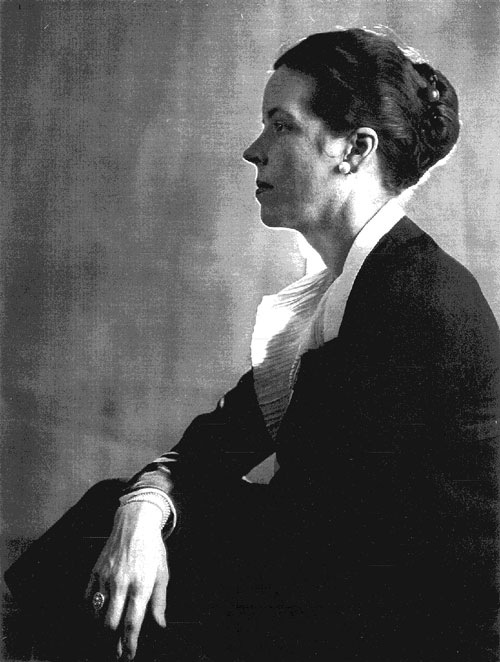
Djuna Barnes 1930's, photo: Berenice Abbott
| Sleep in a Nest |
| of | Flames |
|
Djuna Barnes 1930's, photo: Berenice Abbott |
|
| Djuna Barnes (1892-1982) was one of the most influential writers of her generation. Dylan Thomas considered her one of our greatest novelists. T.S. Eliot wrote the introduction to her masterpiece Nightwood, in which he compares it favorably to Elizabethan tragedy, because of its "style, wit horror and doom". Charles Henri Ford, 19 years younger than Barnes, typed this novel for her during a period of time when they were romantically involved in an affair that challenged even the conventions set by their highly unconventional world. |
|
Charles Henri Ford 1930's, photo: Cecil Beaton |
Ford first met Djuna in New York when he was 20 years old. He went to see her with Parker Tyler in her Washington Square apartment and she later described them as "two little birds on a branch." |
|
It was with Ford whom she made the deeper connection, taking a trip with him up to Harlem's Cotton Club to see Cab Calloway. On the way back in a taxi she kissed him and this passion set into motion a series of events that led to their intimate relationship. The love of Djuna's life was the silverpoint artist,Thelma Wood. It was a difficult, on again, off again, relationship and when she returned home to Paris a few months later in 1931, she had considerable freedom. Ford moved to Paris and went to see Barnes shortly thereafter. She had an appendicitis attack and when she returned to her apartment from the hospital, Ford moved in to help her during her convalescence. This quickly developed into an affair between the distinguished writer and the young poet. She dubbed him "Charles the impossible Ford" and described him as "loose as a cut jock strap." Barnes was just beginning work on Nightwood and she wanted to travel to Germany and Eastern Europe to do research; she asked Ford to accompany her. They went to Vienna, Budapest and Munich and there in Munich called on Barnes's old lover Putzi Hanfstaegel, who was then Hitler's secretary of foreign press. He was a Harvard educated German-American who had returned to Germany and become swept up in the early days of National Socialism. It was through him that Barnes hoped to get an interview with Hitler. This never materialized, but there are elements of Nightwood that resonate with the deep rumblings of war in Europe. Shortly after returning from Paris they left for Tangier to visit the newly arrived Paul Bowles. He had gone there at Gertrude Stein's suggestion and Ford and Barnes had gone at his. They stayed in Bowles's house and cut figures as a threesome in the café life of the city. Our film preserves the impressions of both Bowles and Ford during this period when the latter was typing Nightwood. By the time Ford and Barnes left Tangier for Paris their affair was over. During their complicated affair Barnes wrote a short story about Ford and her relationship with him. "Behind the Heart" reflects the passion of the older for the younger writer and is a kind of testimonial to her love. We use selected sections of this story, along with rare archival photographs and location shots to make real this beautifully written Barnes piece. In the section of Sleep in a Nest of Flames that deals with the Ford-Barnes relationship, we use a variety of means to tell this story. It is framed by the then 88-year-old Ford telling the tale to Allen Ginsberg. From there we use archival footage and photographs to take the viewer to the Harlem of the early 1930's. The great American photographer Berenice Abbott was a friend of Barnes and we use her striking portrait photos to reveal the writer's strong character. Likewise, we have numerous photographs of Ford by Pavel Tchelitchew, Peter Rose Pulham and others that give visual expression to the excitement of this period. We filmed in all of the locations involved, New York, Paris and Tangier, and this provides a sense of reality to this very dreamlike story. Our interviews with the primary sources, Bowles and Ford ,constitute the only direct account to these events by the participants. We also interviewed the Ford biographer and Barnes scholar Mary Lynn Broe about this period and she puts it in its cultural context. We also use reconstructions of Ford visiting Barnes at Washington Square and later her Paris apartment. These give a tangible visualization to this romantic and adventurous section of our story.
THE ACTORS: Rich Bernatovech (Charles Henri Ford) has recently graduated from The Actors Studio and is one of the principals in founding Harmony Road Productions. He was in the cast of the Miramax film Trial by Jury and has performed widely at venues in New York, including the John Houseman Theatre production of A Promise to Try. Mary Lou Wittmer (Djuna Barnes) graduated from the California Institute of the Arts (MFA) and was narrator of the New York Public Theatre production of Underground. She has performed at numerous productions at La Mama and Theatre for the New City. She was St. Elizabeth in Penny Arcade's production of La Miseria.
|
| home page |
| table of contents |
| ©SYMBIOSIS FILMS INC. 2000 |